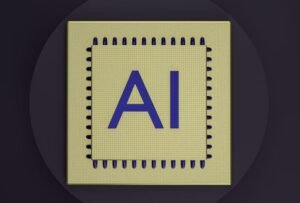AI Models Black
Artificial intelligence (AI) is evolving at a rapid pace, with new advancements shaping various aspects of our lives. One area that has gained significant attention is the development of AI models that can understand and generate text, commonly known as natural language processing (NLP). These models have been used for a wide range of applications, from language translation to content creation. However, as AI models become more sophisticated, concerns have arisen regarding their potential impact on society. In recent years, there has been growing discussion around the issue of AI models generating biased or discriminatory content, particularly when it comes to race. This article aims to explore the topic of AI models generating biased content and the impact it can have on black communities.
Key Takeaways
- AI models can inadvertently generate biased content.
- Black communities may be disproportionately affected by biased AI models.
- Transparent and diverse AI model development is crucial to mitigate bias.
- Continuous monitoring and auditing can help identify and address bias in AI models.
- Collaboration between AI researchers, policymakers, and affected communities is essential for creating fair and unbiased AI models.
The Challenge of Bias in AI Models
One of the main challenges in AI model development is ensuring that the generated output is free from biases and prejudices. However, AI models are trained on vast amounts of data, much of which may contain implicit biases present in the real world. As a result, these biases can be unintentionally reflected in the generated content, perpetuating stereotypes or discriminating against certain groups. The issue of bias in AI models is particularly relevant when it comes to generating text that references race, ethnicity, or culture.
AI models, such as GPT-3 (Generative Pre-trained Transformer 3), are trained on large corpora of text from the internet, which may contain biased or discriminatory language. When these models are used to generate content, they can inadvertently produce text that reflects these biases. For example, a study found that AI models have a tendency to associate certain words or phrases with specific racial or ethnic groups, resulting in biased output that perpetuates stereotypes.
It is essential to ensure that AI models are trained on diverse and inclusive datasets to minimize the risk of producing biased content.
The Impact on Black Communities
AI models generating biased content can have a significant impact on black communities. When AI models produce discriminatory output or perpetuate stereotypes, it can reinforce existing biases and prejudices in society. This can lead to negative consequences, including discrimination in employment, education, or other important domains. Moreover, biased AI models can contribute to the underrepresentation of black voices and perspectives in various areas, including media, literature, and online platforms.
| AI Model Output | Biased Association |
|---|---|
| “Black neighborhoods are dangerous.” | Associating black communities with crime |
| “Black athletes are naturally talented.” | Reinforcing stereotypes about black athletic ability |
Addressing bias in AI models is crucial to promote fairness and equality for black individuals and communities.
Addressing Bias in AI Models
Recognizing the potential harm caused by biased AI models, researchers and organizations are actively working to address this issue. Several approaches have been proposed and implemented to mitigate bias in AI models:
- Implementing diverse and representative datasets for training AI models, ensuring fair representation of black communities.
- Developing bias detection techniques to identify and measure the presence of bias in AI-generated content.
- Enabling user customization and control over AI models to align with their values and preferences.
- Establishing ethical guidelines and policies for AI model development to foster accountability and transparency.
Given the complexity of AI model development, ongoing monitoring, auditing, and collaboration among stakeholders are essential for ensuring the continuous improvement and fairness of AI models.
| Approach | Description |
|---|---|
| Dataset Diversity | Including diverse and representative data for training AI models |
| Bias Detection Techniques | Developing tools to identify and measure bias in AI-generated content |
| User Customization | Allowing users to customize AI models according to their values |
| Ethical Guidelines | Establishing guidelines for responsible AI model development |
The Path to Fair and Unbiased AI Models
Moving towards fair and unbiased AI models requires a collective effort involving AI researchers, policymakers, and the communities affected by biased content, including the black community. Collaboration and open dialogue are crucial for understanding the concerns and needs of black individuals and communities. Moreover, policymakers play a vital role in shaping regulations and policies that promote fairness, accountability, and transparency in AI model development and deployment.
By fostering diversity, transparency, and collaboration, we can build AI models that respect and represent all communities, including black individuals.
| Stakeholder | Role |
|---|---|
| AI Researchers | Developing unbiased and ethical AI models |
| Policymakers | Creating regulations and policies for fair AI model practices |
| Affected Communities | Providing insights and feedback to inform AI model development |
By collectively addressing the issue of biased AI models and working towards fairness, inclusivity, and equality, we can pave the way for AI systems that benefit all individuals and promote a more just society.

Common Misconceptions
AI Models
When it comes to AI models, there are several common misconceptions that people have. Let’s take a look at some of these misconceptions:
- AI models can perfectly replicate human intelligence.
- All AI models are self-aware and conscious.
- AI models will eventually take over and replace all human jobs.
One common misconception about AI models is that they are capable of perfectly replicating human intelligence. While AI models have made significant advancements in recent years and can perform complex tasks, they are still far from replicating human intelligence in its entirety. AI models lack the emotional intelligence, creativity, and context understanding that humans possess.
Another common misconception is that all AI models are self-aware and conscious. In reality, most AI models are designed to perform specific tasks and do not possess self-awareness or consciousness. While AI models can excel at tasks such as image recognition, natural language processing, and decision making, they do not have subjective experiences or consciousness like humans do.
There is also a misconception that AI models will eventually take over and replace all human jobs. While AI models have the potential to automate certain tasks, they are not designed to completely replace humans in the workforce. Instead, AI models are more commonly used to enhance human capabilities and productivity. Human judgment, intuition, and creativity are still valued in many job roles and cannot be easily replicated by AI models.
Overall, it’s important to understand that AI models have limitations and are not capable of replicating human intelligence, possessing consciousness, or replacing all human jobs. They are powerful tools that can assist humans in various tasks, but they are not a substitute for human intelligence and skills.

AI Predictions for 2022
AI has shown an incredible potential to transform various industries, and the year 2022 is expected to witness significant advancements in the field. The following table highlights some of the key predictions for AI in the upcoming year:
| Prediction | Industry Impact |
|---|---|
| Increased automation in the workforce | Efficiency improvements and job displacement |
| Enhanced personalization in marketing | Improved customer engagement and conversion rates |
| Advancements in natural language processing | More accurate and human-like conversational AI |
| Further development of autonomous vehicles | Greater safety and transportation efficiency |
The Impact of AI on Healthcare
The integration of AI in the healthcare industry has the potential to revolutionize patient care, diagnosis, and research. The following table sheds light on some of the ways AI is transforming the healthcare field:
| Application | Benefits |
|---|---|
| Radiology imaging analysis | Improved accuracy in detecting abnormalities |
| Drug discovery and development | Accelerated research and identification of potential treatments |
| Virtual health assistants | Enhanced patient monitoring and personalized healthcare |
| Predictive analytics for disease prevention | Early risk assessment and prevention strategies |
AI in Financial Services
The financial services industry is reaping the benefits of AI, optimizing processes and improving customer experiences. Explore the table below to discover some of the notable applications of AI in finance:
| Application | Advantages |
|---|---|
| Fraud detection | Enhanced security and reduced financial losses |
| Algorithmic trading | Improved decision-making and faster execution |
| Customer service chatbots | 24/7 support and personalized assistance |
| Credit scoring | Fairer assessments and increased accessibility to credit |
AI Ethics and Challenges
As AI continues to advance, it also raises ethical concerns and challenges that need to be addressed. The table below highlights some of the key ethical considerations related to AI:
| Ethical Consideration | Implications |
|---|---|
| Algorithmic bias | Unequal treatment and perpetuation of societal biases |
| Privacy and data protection | Risk of personal information misuse |
| Unemployment due to automation | Disruption of job markets and income inequality |
| Accountability and transparency | Difficulties in understanding and auditing AI decisions |
AI in Entertainment
The entertainment industry is increasingly leveraging AI technologies to enhance creativity and improve user experiences. The following table showcases some captivating uses of AI in entertainment:
| Application | Benefits |
|---|---|
| Recommendation systems | Personalized content suggestions for users |
| Computer-generated imagery (CGI) | Realistic and immersive visual effects |
| Music composition | Assistance in creating original and unique compositions |
| Virtual reality experiences | Immersive and interactive entertainment |
AI in Environmental Sustainability
The incorporation of AI in environmental initiatives is bringing new hope and innovative solutions to combat climate change. The table below demonstrates some of the ways AI contributes to environmental sustainability:
| Application | Advantages |
|---|---|
| Energy optimization | Reduced energy consumption and carbon footprint |
| Waste management | Efficient recycling and waste disposal strategies |
| Forest monitoring | Early detection of deforestation and illegal activities |
| Climate modeling | Accurate predictions for effective climate change mitigation |
AI in Retail
Retailers are embracing AI technologies to gain a competitive edge, enhance customer experiences, and streamline operations. Explore the table below to discover some applications and benefits of AI in the retail sector:
| Application | Benefits |
|---|---|
| Inventory management | Optimized stock levels and reduced losses |
| Personalized recommendations | Increased customer satisfaction and sales |
| Dynamic pricing | Effective price optimization for maximum profitability |
| Automated checkout systems | Enhanced efficiency and reduced waiting times |
AI Security and Cybersecurity
AI plays a vital role in fortifying digital security and defending against cyber threats. The following table showcases some of the important applications of AI in security:
| Application | Implications |
|---|---|
| Malware detection | Early identification and prevention of malicious software |
| User behavior analytics | Detection of suspicious activities and insider threats |
| Network intrusion detection | Real-time monitoring and rapid response to attacks |
| Vulnerability assessment | Identifying weaknesses and proactive risk management |
AI in Education
Education is undergoing a transformation with the integration of AI, empowering teachers and students alike. The following table sheds light on some applications and benefits of AI in the educational field:
| Application | Advantages |
|---|---|
| Personalized learning | Adaptive instruction tailored to individual student needs |
| Automated grading | Efficiency in providing feedback and reducing teacher workload |
| Smart content recommendation | Access to relevant and supplementary learning materials |
| Educational chatbots | 24/7 assistance and instant information retrieval |
In conclusion, AI’s impact is widespread, reaching various sectors and driving remarkable advancements. From healthcare to entertainment, finance to education, and even environmental sustainability, AI is revolutionizing the way we live and work. However, as AI develops, ethical considerations and challenges must be prioritized to ensure responsible and beneficial implementation. While there are immense benefits to leveraging AI’s potential, responsible and thoughtful integration is key to maximizing its positive impact on society.
Frequently Asked Questions
AI Models
- What are AI models?
- AI models are algorithms that are trained on large amounts of data to perform specific tasks or make predictions. They are used in various fields such as computer vision, natural language processing, and machine learning.
- How are AI models created?
- AI models are created through a process called training. This involves providing the model with labeled data and allowing it to learn patterns and correlations. The training process typically involves adjusting the model’s parameters or weights to minimize the error between its predicted output and the actual output.
- What is transfer learning in AI models?
- Transfer learning is a technique used in AI models where pre-trained models are used as a starting point for a new task. Instead of training a model from scratch, transfer learning allows the model to leverage the knowledge learned from a similar task, saving time and computational resources.
- How can AI models be evaluated?
- AI models can be evaluated using various metrics such as accuracy, precision, recall, and F1 score. Additionally, techniques like cross-validation and holdout validation can be used to assess the model’s performance on unseen data.
- What are some challenges in developing AI models?
- Developing AI models can be challenging due to the need for large annotated datasets, computational resources, and expertise in algorithms and programming. Additionally, issues such as overfitting, bias, and ethical considerations need to be carefully addressed.
- What is the role of AI models in image recognition?
- AI models play a crucial role in image recognition tasks. They can learn to classify and detect objects, recognize faces, or generate captions for images. Convolutional Neural Networks (CNNs) are commonly used in image recognition tasks due to their ability to capture spatial dependencies.
- Can AI models be used for natural language processing?
- Yes, AI models are widely used in natural language processing (NLP). They can be trained to perform various NLP tasks such as sentiment analysis, language translation, text generation, and question answering. Recurrent Neural Networks (RNNs) and Transformer models are commonly used in NLP tasks.
- How do AI models handle large datasets?
- AI models can handle large datasets by using techniques like mini-batch training and data parallelism. Mini-batch training involves dividing the dataset into smaller subsets, allowing the model to learn from a portion of the data at each iteration. Data parallelism involves distributing the training process across multiple computing devices, allowing for faster processing of large datasets.
- Are AI models always accurate?
- AI models are not always accurate. The performance of a model can vary depending on factors such as the quality and quantity of the training data, the complexity of the task, and the model architecture. Regular updates, improvements in training techniques, and fine-tuning can help enhance the accuracy of AI models.
- Can AI models be biased?
- Yes, AI models can be biased. Bias can arise due to imbalances in the training data, the presence of certain cultural or societal biases, or unintentional biases in the model architecture. Addressing bias in AI models is an important research area to ensure fairness and prevent discrimination.




